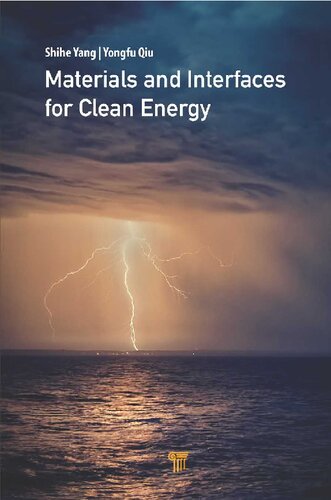

Most ebook files are in PDF format, so you can easily read them using various software such as Foxit Reader or directly on the Google Chrome browser.
Some ebook files are released by publishers in other formats such as .awz, .mobi, .epub, .fb2, etc. You may need to install specific software to read these formats on mobile/PC, such as Calibre.
Please read the tutorial at this link. https://ebooknice.com/page/post?id=faq
We offer FREE conversion to the popular formats you request; however, this may take some time. Therefore, right after payment, please email us, and we will try to provide the service as quickly as possible.
For some exceptional file formats or broken links (if any), please refrain from opening any disputes. Instead, email us first, and we will try to assist within a maximum of 6 hours.
EbookNice Team

Status:
Available5.0
12 reviewsCurrently, the reliance on fossil fuels raises concerns on the increasing global energy demand, the rapid anthropogenic climate changes and growing environmental problems. The grand challenge is to search for viable carbon-neutral sources of renewable energy. Nanomaterials are arguably the base that integrates nanotechnology, information technology, and biotechnology; the major drivers of technological development today. Over the past decades, the understanding of form-function relations surrounding nanomaterials has significantly brightened the prospects of the transition from fossil fuels to solar fuels.
This book introduces the latest developments in nanomaterials aimed at the applications in clean energy areas. It overviews the close link between nanomaterials development and energy applications from the experience and perspective of the authors. It discusses the bottom-up synthesis and interface engineering of new materials of different dimensions and describes their applications in future energy devices such as secondary batteries, novel solar cells, luminescent devices, and water splitting electrolyzers.
.